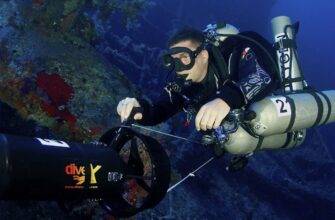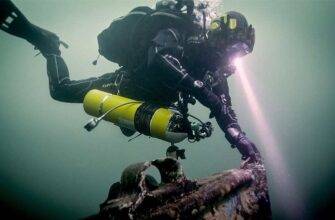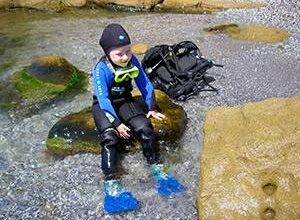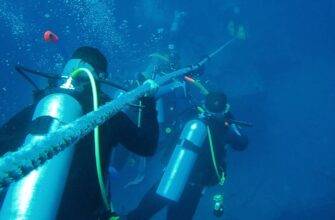
The tube should be comfortable and offer minimal resistance to breathing. To determine if these requirements are met, insert the tube in your mouth so the mouthpiece flange is between your lips and teeth and the tube is against your left ear. The mouthpiece should feel comfortable and be held straight in your mouth without wobbling or causing your jaw to become tired.
Then try breathing deeply through the tube to determine ease of breathing. Your instructor will be happy to help you make the best choice, tailored to your individual needs.
Preparing to use
Attach the tube to the left side of the mask using the small rubber retainer located on the tube. As shown in Fig. 1-40, first slide one ring of the retainer onto the tube. Now wrap the straight part of the retainer (the part that connects the rings) around the mask strap. Then slide the second ring onto the tube. Finally, adjust the position of the tube and clamp so the mouthpiece is within reach of your mouth while the mask is in place.
Place on mask and secure the tube against your left ear. Adjust the height of the tube and rotate the tube until the mouthpiece remains in your mouth even when your mouth is wide open. The top of the tube should be near the top of the back of your head. When the tube is properly positioned, your mouth muscles should not squeeze the mouthpiece to keep the tube in place.
Care
Like the mask, the snorkel should be rinsed with fresh water after each use, stored in a cool, dry place, and kept out of direct sunlight. Do not store the tube near neoprene (black) rubber to prevent staining.
Flippers
Purpose – good fins allow you to move in the water with much less effort and more efficiency than swimming with your arms alone. By providing greater flatness that your strong leg muscles can apply to swimming, you gain more efficient propulsion than that provided by your hands and free your hands for other activities.
All fins, regardless of type or design, have two things in common:
1) the presence of foot pockets
2) blades to propel you forward.
Types
There are two basic types of modern fins:
1) with an adjustable attachment strap
2) with a full gimp.





